Nintendo’s first home console, the NES, has a 40-year history with some interesting tidbits. Despite being a veteran in the gaming industry, Nintendo is currently experiencing a remarkable period. The Switch, available for six years, still sells well, and The Legend of Zelda: Tears of the Kingdom is earning widespread acclaim as an outstanding game. Even The Super Mario Bros. Movie struck gold at the box office, highlighting Nintendo‘s Midas touch.
However, things weren’t always so rosy. In the 1980s, when Nintendo stepped into the console market, doubts from both retailers and experts were abundant, and initial sales didn’t shine. Along the way, there were odd decisions and blunders that have faded from memory, but the Internet has a way of preserving such stories. As we commemorate four decades since the Famicom’s launch in Japan, let’s explore 15 lesser-known facts about the NES.
Atari’s Initial Plan: Distributing the Console in the U.S.

During the early 1980s, the video game market was in disarray. Atari held sway over the home console sector but alienated consumers by inundating stores with subpar games. Consequently, overall sales plummeted. In 1983, Nintendo introduced the Famicom in Japan; however, initial sales were lackluster. In an attempt to break into the American market, Nintendo sought collaboration with Atari for launching its novel console.
According to the agreement, Atari was set to unveil the Nintendo Advanced Video Gaming System, a home computer furnished with a keyboard and cassette data recorder. The situation took a twist when Atari executives, during CES 1983, witnessed competitor Coleco showcasing Nintendo’s Donkey Kong on its new Adam home computer. Misinterpreting this, Atari assumed Nintendo had withdrawn from the contract, despite Nintendo being unaware of Coleco’s demo. Just as this confusion was untangled, Atari’s CEO faced departure, leading to the unraveling of the deal. Simultaneously, Famicom sales gained traction in Japan, prompting Nintendo to embark on an independent journey for the U.S. launch of the NES in 1985.
Unlicensed Game Cartridges and The Tengen Tetris

That’s not quite the end of the Atari-Nintendo story. To avoid Atari’s mistakes of oversaturating the market, Nintendo only allowed publishers to release five games per year for the NES. They even installed a lockout chip on the console that prevented other companies from getting around this by manufacturing their own cartridges.
Various legal issues forced Atari to create a new subsidiary called Tengen to release games for the NES. After releasing three authorized games, and failing to find a workaround for the 10NES lockout chip, Tengen simply requested information about the chip from the United States Copyright Office under the pretense of pursuing litigation. With that information in hand, the chip was quickly reverse-engineered. Tengen then released more than a dozen of its unauthorized black cartridge games before the inevitable lawsuit from Nintendo arrived. Tengen lost and had to recall tens of thousands of games, making them valuable collector’s items now.
The NES’s Early Marketing as a Toy, Not Just a Console

After the potential Atari deal crumbled in 1983, Nintendo revamped the Nintendo Advanced Video Gaming System into the well-known NES we cherish today. However, in 1985, retailers still regarded video games with caution, fearing consoles that would languish unsold on shelves.
Nintendo’s remedy was to steer clear of anything evoking a typical video game console. This strategy led to the nomenclature “entertainment system” for its new offering. This approach also influenced the emphasis on unconventional elements like the light gun and R.O.B. robot, designed to respond to on-screen cues. Essentially, the NES was meticulously crafted to exude a toy-like quality, meticulously avoiding any ties to the then-feared label of video games.
Array of Unusual NES Peripherals

Even as it became evident that consumers desired engaging video games rather than merely connecting a toy to their TV, both Nintendo and other companies continued to churn out peripherals with dubious worth. An example of this is the power pad, which was included with certain NES versions—a floor mat fitted with 12 pressure sensors, primarily used for track and field as well as exercise-based games.
While the NES Zapper is now nostalgically cherished, particularly by those who spent countless hours on the bundled Duck Hunt game, light gun games were also compatible with Konami’s LaserScope headset. This headset featured a crosshair to position over your right eye and supposedly fired when you uttered “Fire!”—though its effectiveness was limited. Similarly, the renowned Power Glove, while visually impressive at the time, suffered from poor design, making it nearly impractical to play most games with it.
Shigeru Miyamoto’s Unreleased Debut
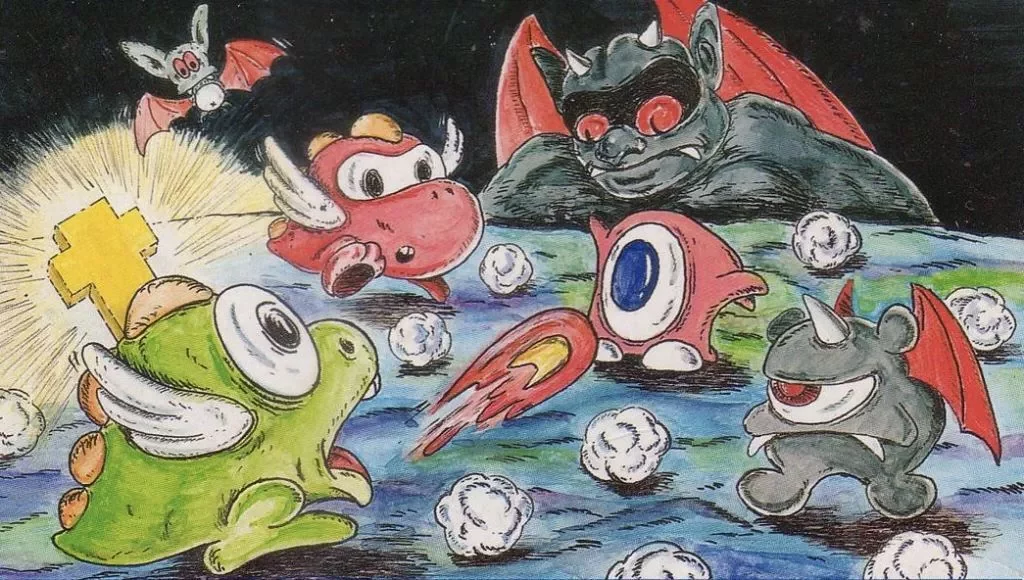
Shigeru Miyamoto stands as a towering figure among video game designers, earning a spot in the pantheon of the industry’s greats. Revered as the creative mind behind iconic characters like Donkey Kong, Mario, and Link, his imaginative prowess has consistently reshaped the landscape of gaming. Yet, curiously, his inaugural console creation, “Devil World,” remains absent from official release in the United States—a circumstance unlikely to change.
The game’s omission from the American market isn’t a result of its lack of quality; in fact, it boasts a commendable gameplay experience. The underlying complication lies in the contentious nature of its content for American sensibilities. “Devil World,” essentially Miyamoto’s reimagining of the Pac-Man concept, casts players as a dragon maneuvering through a labyrinth while evading malevolent creatures under the devil’s influence (positioned atop the screen). On this journey, the dragon gathers crosses and Bibles to enhance its capabilities. Presently, the game’s incorporation of religious imagery and themes renders it a potential source of significant controversy if Nintendo were to release it in the United States. Nevertheless, it’s worth noting that characters from “Devil World” have made appearances in the Super Smash Bros. series, demonstrating their enduring legacy.
Super Mario Bros. Holds 7th Place Among Best-Selling Video Games

Given the lackluster sales of video games during the early 1980s, it’s truly remarkable how astonishing Nintendo’s initial triumphs were. Undoubtedly, none stood taller in the ’80s Nintendo lineup than the iconic Super Mario Bros. Throughout its history, the game has amassed a staggering estimated 58 million copies sold worldwide. It’s important to acknowledge that this success was partially attributed to its inclusion as a bundled title with most NES consoles, and subsequent reissues over the years have only further bolstered its sales. This figure is undeniably impressive for a game launched during that era.
Interestingly, Super Mario Bros. holds its ground as the oldest game among the top-tier titles on that roster. Presently, Minecraft claims the top spot on the list with an impressive 238 million copies sold to date, taking into account its extensive appeal. Notably, it took Nintendo two decades to introduce a game that surpassed Super Mario Bros. in sales figures. Additionally, the 2006 sensation Wii Sports holds a respectable fourth place, boasting over 82 million units sold.
The Uncertain Release Date of Super Mario Bros. in the U.S.

Here’s the intriguing part: despite the immense popularity of Super Mario Bros., there remains an enigma surrounding its exact release date in the U.S. While we definitively know that the game hit Japanese markets on September 13, 1985, the situation becomes more obscure due to the NES receiving a limited U.S. launch on October 18 of that same year. Consequently, the timeline of the game’s global release becomes clouded.
Over the years, enthusiasts had assumed that Super Mario Bros. arrived in the U.S. in 1986, mainly due to its inclusion with NES consoles at that juncture. Internally, Nintendo now asserts that the game debuted concurrently with the console’s launch. However, a meticulous article investigating this matter, published in 2012, proposes that the game might have actually entered the scene (albeit in a restricted capacity) about a month after the NES, specifically on November 17, 1985. Regrettably, given the lax archival practices of that era, pinpointing the precise moment when Super Mario Bros. was initially purchasable in the U.S. might remain an unattainable feat.
Chip Shortages and Scarcity: The Hunt for Popular NES Games
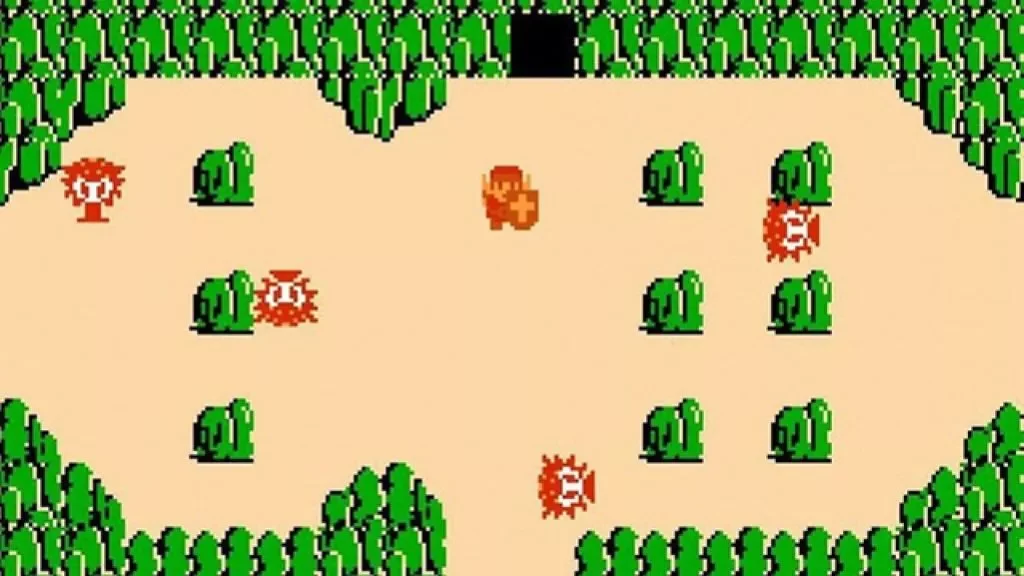
Although digital distribution has its share of critics, a significant advantage of this format lies in its ability to prevent games from becoming unattainable due to chip shortages. This issue was a recurrent challenge during the 1980s, a period when Nintendo held sway over the market and all games were dispatched on cartridges. During that era, regardless of your location, you could encounter stretches of several months when locating a store with stocks of even the most popular titles like The Legend of Zelda or Super Mario Bros. 2 proved to be a fruitless pursuit.
Fortunately, this predicament has largely receded over time, thanks to shifts in manufacturing practices and the eventual transition to consoles that employ discs. While acquiring a PlayStation 5 or an Xbox Series X might present difficulties, we should acknowledge the convenience of readily accessible game titles—a privilege we should be thankful for.
Achievements and Digital Distribution on the Famicom Disk System

In Japan, the Famicom was complemented by a groundbreaking disk add-on, a concept often acknowledged by contemporary gamers. However, the extent of its futuristic nature might not be as widely recognized.
While Nintendo did introduce fresh games on disk cards (with the original Legend of Zelda standing out as a notable early exclusive), the true innovation lay in the potential it unlocked. This technology allowed for the purchase of blank disks, which could then be taken to conveniently placed Disk Writer kiosks spread across the country. At these kiosks, users could download a new game onto the disk at a fraction of the cost of acquiring a new cartridge or disk.
What added to its allure was the existence of “Disk Fax” machines within retail outlets. These machines enabled players to submit their high scores to Nintendo in exchange for rewards such as Famicom stationary or even a coveted gold Punch-Out!! cartridge. Remarkably, this system was essentially an early forerunner to the achievements that would later gain prominence on platforms like Steam and Xbox. Observing how extensively the rest of the industry embraced these concepts renders the fact that Nintendo’s online infrastructure consistently lagged behind its competitors all the more perplexing.
Nintendo’s Premium Hotline for Mastering Games

During the late 1980s and early 1990s, the fledgling Internet was a rarity in American households, and even if you managed to connect online to seek assistance on conquering a video game, the likelihood of finding relevant content was minimal. If you encountered genuine difficulty with a game, there was a savior in the form of the Nintendo Power Hotline.
While the service underwent transformations over time, its initial offering comprised pre-recorded tips aimed at helping players navigate through the most challenging sections of popular games, accessible for the price of a long-distance phone call. Subsequently, a 900 number provided an avenue to communicate with a trained “game counselor” who would provide step-by-step guidance through a game, albeit at a cost of 95 cents per minute. Despite its immense popularity in the late ’80s and ’90s, as the Internet gained ground, calls to the hotline dwindled, eventually leading to Nintendo phasing out the service in 2005.
ESRB’s Lone Rating

Today, the Entertainment Software Rating Board (ESRB) stands as an indispensable facet of the video game industry, furnishing ratings and guidance to aid parents in discerning the suitability of games for their children. However, in the ’80s, Nintendo upheld stringent censorship standards, leading to a dearth of attention toward potentially contentious themes in NES games. It wasn’t until the 16-bit era, characterized by improved graphics and the emergence of more violent titles such as Mortal Kombat, that the specter of government intervention spurred the establishment of the ESRB.
Consequently, when the ESRB eventually assumed the role of game ratings, only one NES game remained for official release: Wario’s Woods, which arrived in December 1994. The puzzle game was initially assigned a rating of “Kids to Adults” by the ESRB, a designation that would later transition to “Everyone” after a few years.
Nintendo’s Official Lyrics for the Super Mario Bros. Theme

Nintendo is renowned for its rigorous protection of intellectual property, often sending cease and desist letters for even the slightest perceived violations. However, there have been instances, particularly during Nintendo’s early days, where the company greenlights seemingly random projects. A notable example dates back to 1985 when Nintendo organized a contest inviting fans to submit lyrics for the iconic first-level theme of Super Mario Bros. to a Japanese radio station. The victorious entry, “Go Go Mario,” was even granted a vinyl release.
Interestingly, the result is quite appealing. Lines such as “Go save Princess Peach! Go! / Today, full of energy, Mario runs / Today, full of energy, jumping! / Today, full of energy, searching for coins / Today, keep going, Mario!” might not perfectly align in English, yet the composition is remarkably compelling in Japanese.
Before Mario: Diskun, Nintendo’s Original Hardware Mascot
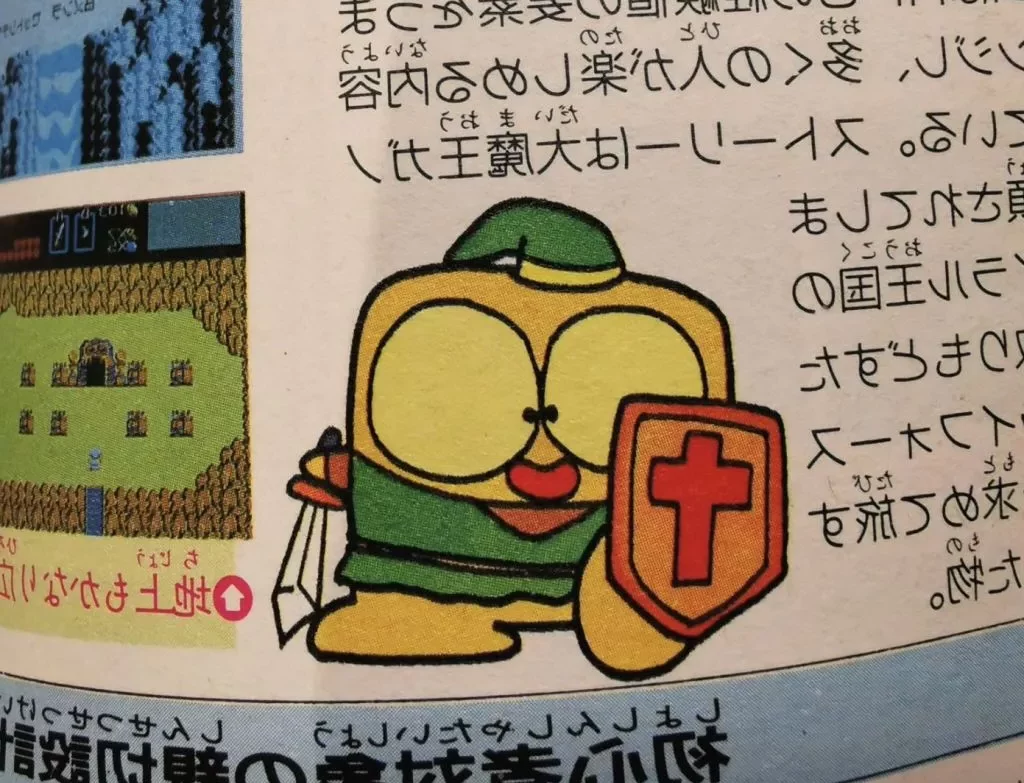
It’s a challenge to envision Nintendo without the iconic presence of Mario today, yet the company’s initial intentions for the renowned plumber were quite modest. Initially dubbed “Mr. Video,” the plan was for him to make occasional appearances in essential games. Curiously, Nintendo’s mascot aspirations initially centered around Diskun, a square, yellow floppy disk with googly eyes. Understandably, Diskun’s lack of appeal became evident.
Unquestionably, Diskun’s relative obscurity in the West is largely due to his role as the official mascot of the Japan-exclusive Famicom Disk System. His most recognizable appearance was at the top left corner of the manuals for each disk game. Even if this add-on had been introduced to Western markets, it’s unlikely that Diskun would have achieved the same level of popularity as Mario. Though somewhat obscure nowadays, Diskun occasionally resurfaces in Nintendo games, and there’s even a subtle reference to Diskun in The Super Mario Bros. Movie.
NES Games with Famicom Converter Compatibility
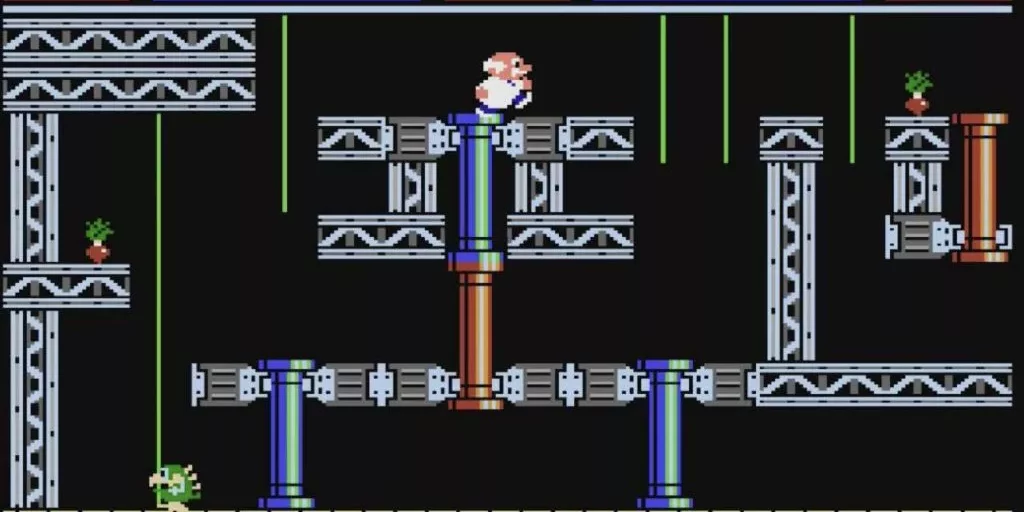
Over time, the concern has diminished, but during the era of the NES, game publishers were notably apprehensive about gamers eagerly importing titles from Japan and potentially undercutting sales in the United States. The strategy to tackle this issue was to raise as many barriers as possible to dissuade potential importers. This entailed designing Famicom games with a 60-pin board for connection to the console, while NES games required a 72-pin board. Games from one region were essentially incompatible with consoles from another region, necessitating the use of a converter—an expensive and hard-to-find accessory at the time.
However, a little-known fact emerged after the console’s U.S. launch: numerous NES launch games included an official converter. Presumably, in a bid to save time and manufacturing expenses, Nintendo incorporated a Famicom board into a converter, placed it inside an NES cartridge, and called it a solution. Although the utility of these converters is somewhat limited today, dedicated collectors still actively seek them out. An NES cartridge containing a converter can be identified by the presence of five screws on the back, instead of the customary three. Moreover, these cartridges tend to have slightly increased weight, and in the instance of “Gyromite,” the converter cartridge boasts a subtly different-colored sticker label.
Nintendo of Japan’s Famicom Support through the 2000s

Although the official release of the last Famicom and NES games occurred in 1994, Nintendo’s support for these consoles didn’t abruptly cease. The final NES units rolled off the assembly line in 1995, and while the Famicom’s production extended until 2003—two decades after its initial debut—it continued beyond the launch of the GameCube.
Remarkably, if you were fortunate enough to acquire one of the last Famicom units, Nintendo of Japan continued to offer repair services for the console until October 31, 2007—nearly a year after the release of the Wii. Even then, the decision to halt support stemmed from the scarcity of available spare parts. This extended dedication to the system underscores Nintendo’s commitment to its inaugural console, a testament to the company’s enduring support.
Conclusion
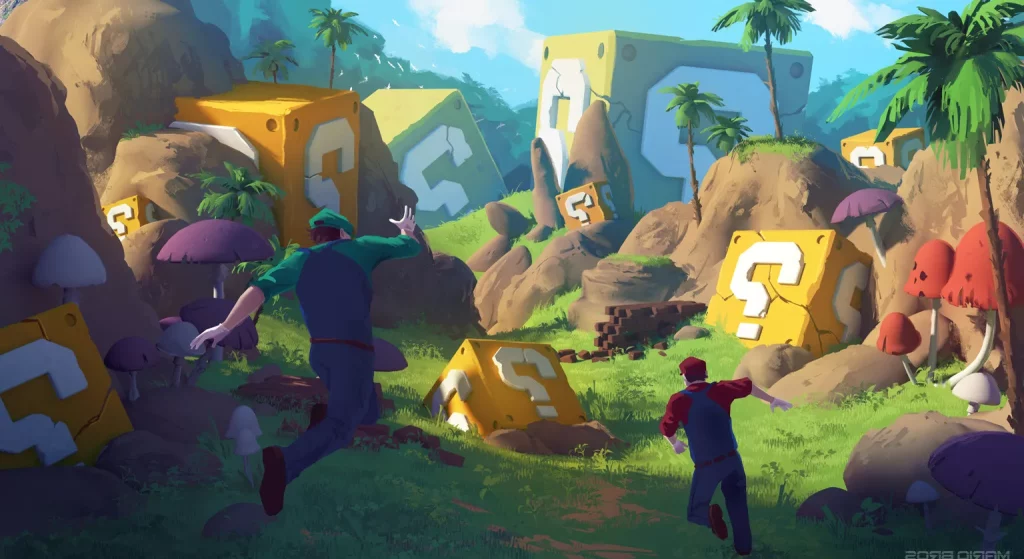
In retrospect, Nintendo’s journey through the evolution of the gaming industry is a fascinating tale marked by innovation, adaptability, and occasional unpredictability. From its inception with characters like “Mr. Video” and the unconventional Diskun, to the rise of Mario as an iconic figure, Nintendo’s approach to game development, branding, and fan engagement has been a blend of careful planning and unexpected turns.
The protective measures and censorship guidelines of the past, seen particularly during the NES days, stand in stark contrast to the modern landscape of the gaming world. The emergence of the Entertainment Software Rating Board (ESRB) as a regulatory body highlights how the industry has adapted to address concerns over content suitability and government intervention. This shift, while evident in the story of Nintendo’s mascot, Mario, and his journey from humble beginnings to a global gaming icon, also reflects the company’s willingness to embrace change and respond to market dynamics.
Throughout its history, Nintendo’s approach to technology, support, and community interaction has been a blend of calculated decisions and daring experiments. The company’s decisions to extend support for its early consoles well beyond their expected lifespans and to navigate the challenges of international compatibility illustrate Nintendo’s commitment to its creations and its audiences. As the gaming world continues to evolve, this rich history serves as a reminder of the industry’s resilience, the importance of embracing innovation, and the enduring legacy of gaming’s pioneers.
